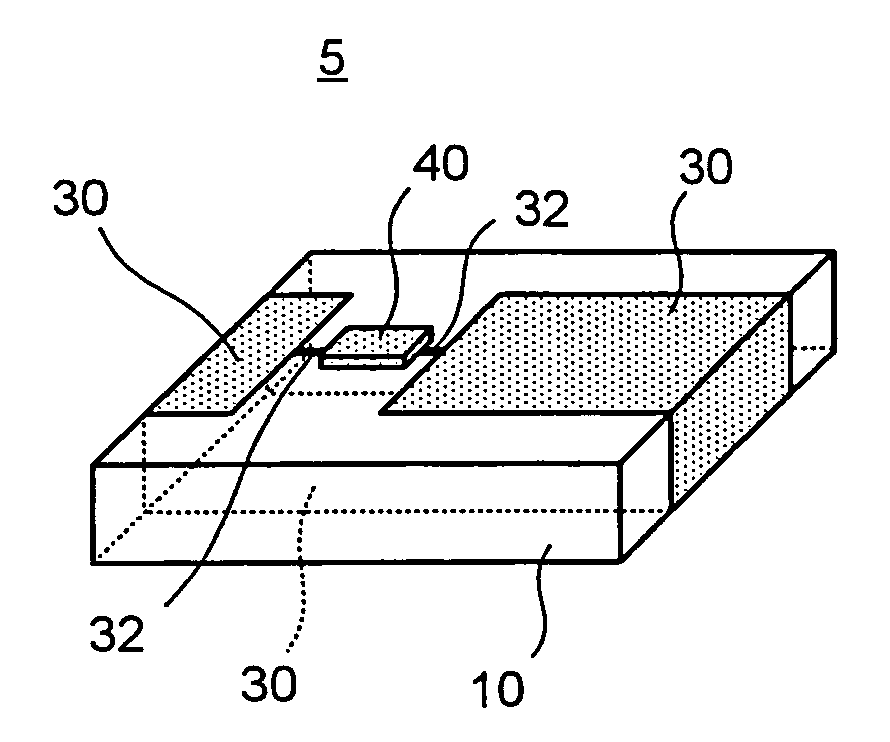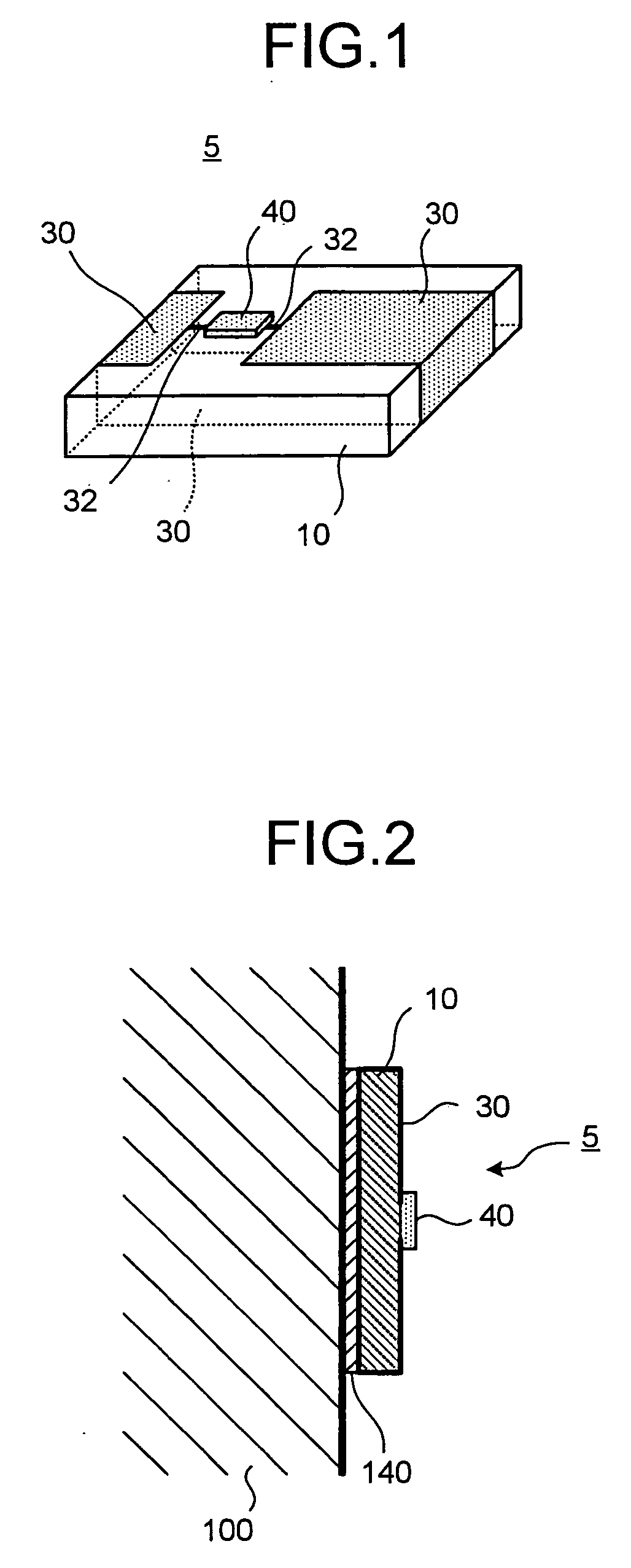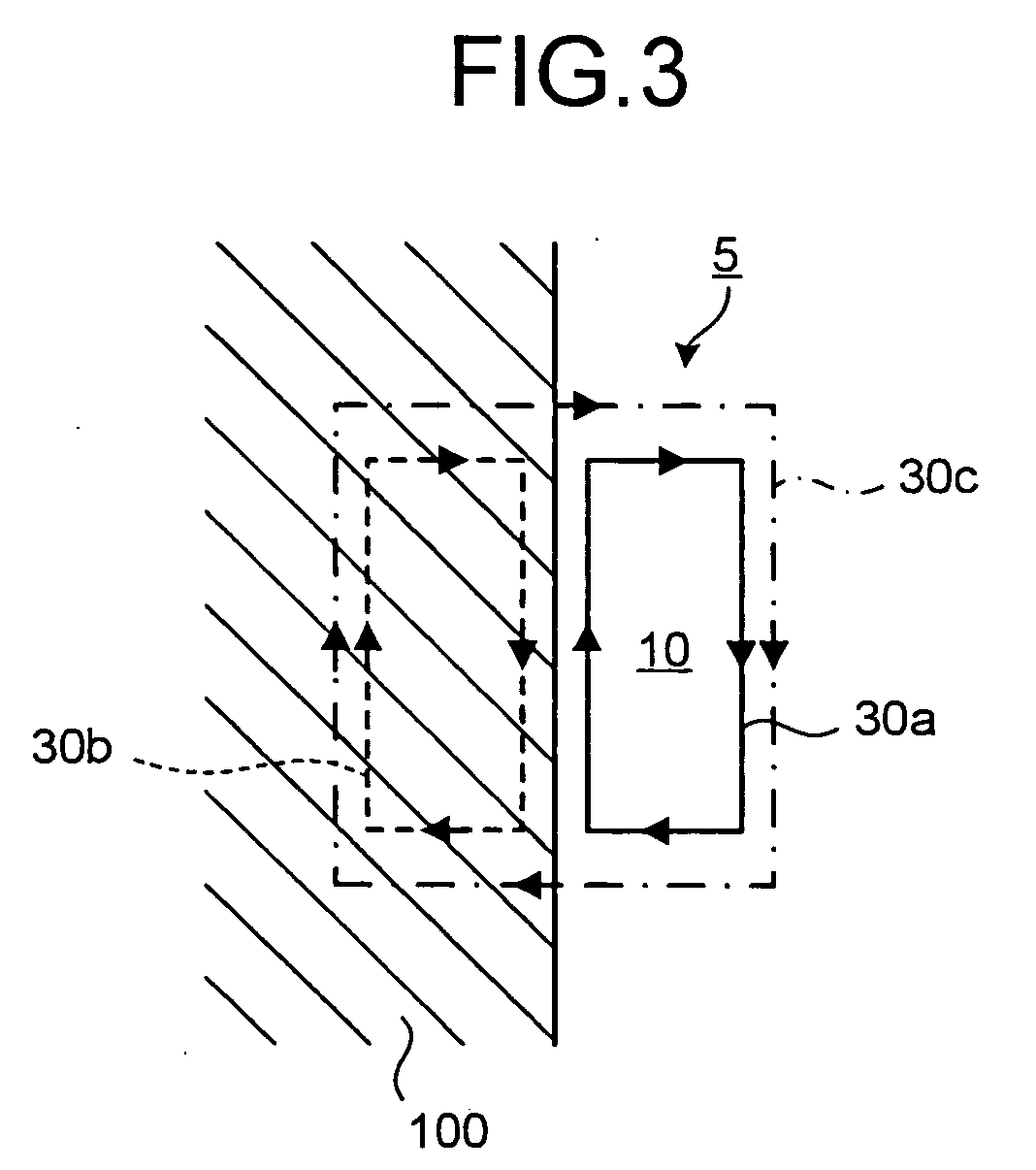Radio frequency identification (RFID) tag and manufacturing method thereof
a technology of radio frequency identification and rfid tag, which is applied in the direction of burglar alarm mechanical actuation, burglar alarm by hand-portable object removal, instruments, etc., can solve the problem that the loop antenna cannot be used in small rfid tag
- Summary
- Abstract
- Description
- Claims
- Application Information
AI Technical Summary
Benefits of technology
Problems solved by technology
Method used
Image
Examples
first embodiment
[0058] The RFID tag 5 that has a structure as described above that can transmit accurate radio wave information due to enhanced transmission gain of the antenna when receiving power supply and information from and transmitting the received information to an external device (not shown) contact-free. As a result, the reliability of the data communication can be increased. Though a rectangular dielectric member 10 has been used in the RFID tag 5 the dielectric member 10 may be of any shape (for instance, cylindrical, triangular prism, spherical, etc.) depending on the article it is intended for.
[0059]FIG. 4 is a perspective view of a RFID tag according to a second embodiment of the present invention. FIG. 5 is a top view of a film substrate. The parts in the second embodiment that are identical to those in the first embodiment are assigned the same reference numerals and their description is made very brief or skipped altogether.
second embodiment
[0060] As shown in FIG. 4, the RFID tag 5 according to the present invention includes the dielectric member 10, a film substrate 20, and the IC chip 40. The film substrate 20 forms the antenna pattern 30 that transmits and receives data and is wrapped around the dielectric member 10. The IC chip 40 is connected to the antenna pattern 30.
[0061] The rectangular dielectric member 10 is composed of a dielectric material that has a designated dielectric constant and can be formed inexpensively using only glass-free resin. For instance, the dielectric member 10 can be formed with resin such as polytetrafluoroethylene (PTFE), polyphenylether (PPE), and the like, that have excellent processibility and mechanical properties.
[0062] As shown in FIG. 4 and FIG. 5, the antenna pattern 30 that forms the transceiving loop antenna is formed on the film substrate 20 by a printing means. The film substrate 20 is composed of a flexible thermoplastic material. Polyethylene terephthalate (hereinafter, ...
third embodiment
[0070]FIG. 9 is a perspective view of the RFID tag according to the present invention. FIG. 10 is a top view of the film substrate. As shown in FIG. 9 and FIG. 10, the chip pad 32 is provided parallel to the length of the antenna pattern 30 in such a way that the position of the feeding point of the IC chip 40 can be adjusted.
[0071] In other words, the chip pad 32 is connected to the antenna pattern 30 by a connector 32a and is provided parallel to the antenna pattern 30. The chip pad 32 and the connector 32a are composed of the same material as the antenna pattern 30 and are simultaneously formed when the antenna pattern 30 is printed on the film substrate 20.
[0072] As shown in FIG. 9, the film substrate 20 is wrapped around and secured to the dielectric member 10 in such a way that the antenna pattern 30 functions as a patch antenna. The IC chip 40 is mounted after the film substrate 20 is secured to the dielectric member 10 and the position of the feeding point is adjusted.
[007...
PUM
| Property | Measurement | Unit |
|---|---|---|
| dielectric constant | aaaaa | aaaaa |
| dielectric constants | aaaaa | aaaaa |
| dielectric losses | aaaaa | aaaaa |
Abstract
Description
Claims
Application Information
 Login to View More
Login to View More - R&D
- Intellectual Property
- Life Sciences
- Materials
- Tech Scout
- Unparalleled Data Quality
- Higher Quality Content
- 60% Fewer Hallucinations
Browse by: Latest US Patents, China's latest patents, Technical Efficacy Thesaurus, Application Domain, Technology Topic, Popular Technical Reports.
© 2025 PatSnap. All rights reserved.Legal|Privacy policy|Modern Slavery Act Transparency Statement|Sitemap|About US| Contact US: help@patsnap.com



